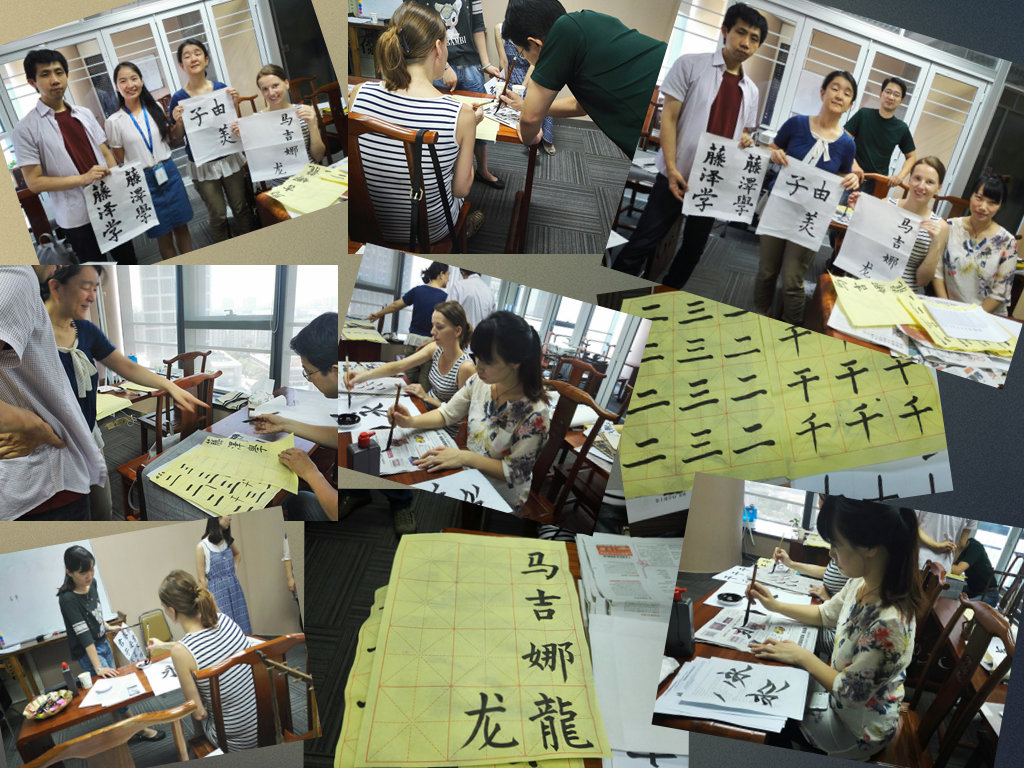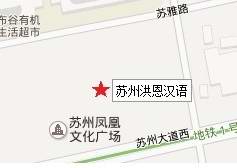News
苏州洪恩汉语8月2日成功举办了"书法"传统文化活动
August 2nd(Sun) Traditional Chinese culture activity--Calligraphy was held successfully by Suzhou Hong N Chinese Institute
(2015-08-02)

书法
在汉字书写中,书法与中国的历史同兴衰。它是中国最高的艺术形式,它传达思想的同时,也表现了线条的美。书法是中国四大技艺——琴、棋、书、画之一。然而,比起其他三种,书法更多地体现了韵律、线条和结构的完美。书法是汉字的书写艺术。它不仅是中华民族的文化瑰宝,而且在世界文化艺术宝库中独放异采。汉字在漫长的演变发展的历史长河中,一方面起着思想交流、文化继承等重要的社会作用, 另一方面它本身又形成了一种独特的造型艺术。近代经过考证,关于中国文字起源,一般认为在距今约5000-6000年左右中国黄河中游的"仰韶文化时期",已经创造了文字。仰韶文化因1921年首先在河南渑池仰韶村发现而得名的。近40余年,又陆续有许多发现。 世界上各民族的文字,概括起来有三大类型,即表形文字;表意文字;表音文字。汉字则是典型的在表形文字基础上发展起来的表意文字。象形的造字方法即是把实物画出来。不过画图更趋于简单化、抽象化,成为突出实物特点的一种符号,代表一定的意义,有一定的读音。我们的汉字,从图画、符号到创造、定型,由古文大篆到小篆,由篆而隶、楷、行、草,各种形体逐渐形成。在书写应用汉字的过程中,逐渐产生了世界各民族文字中独一的、可以独立门类的书法艺术。
Chinese Calligraphy
As the art of writing Chinese characters (hàn zì 汉字), Chinese calligraphy, or shufa, is boasting as long a history as that of China itself. It is one of the highest forms of Chinese art, serving the purpose of conveying thoughts while also showcasing abstract beauty of lines. Calligraphy is one of the four basic skills and disciplines of the Chinese literati, together with painting (huà 画), stringed musical instruments (qín 琴) and board games (qí 棋). However, rhythm, lines, and structure are more perfectly embodied in calligraphy than in the other three skills.Calligraphy (shū fǎ 书法) has traditionally been regarded as China's highest form of visual art - to the point that a person's character was judged by the elegance of their handwriting! Decorative calligraphy is found all over China, in temples and adorning the walls of caves and the sides of mountains and monuments. The basic tools of calligraphy - brush and ink - are also the tools of Chinese painting, with linework and tone the all-important components.Despite the ravages of time, war and ideology, there's still a lot to see architecturally. Traces of the past include the imperial structures of Beijing, the colonial buildings of Shanghai, the occasional rural village and Buddhist, Confucian and Taoist temples. Funerary art was already a feature of Chinese culture in Neolithic (xīn shí qì shí dài 新石器时代) times (9000-6000 BC), ranging from ritual vessels and weapons to pottery figures, jade and sacrificial vessels made of bronze. Earthenware production is almost as ancient, with the world's first proto-porcelain being produced in China in the 6th century AD, reaching its artistic peak under the Song rulers.






